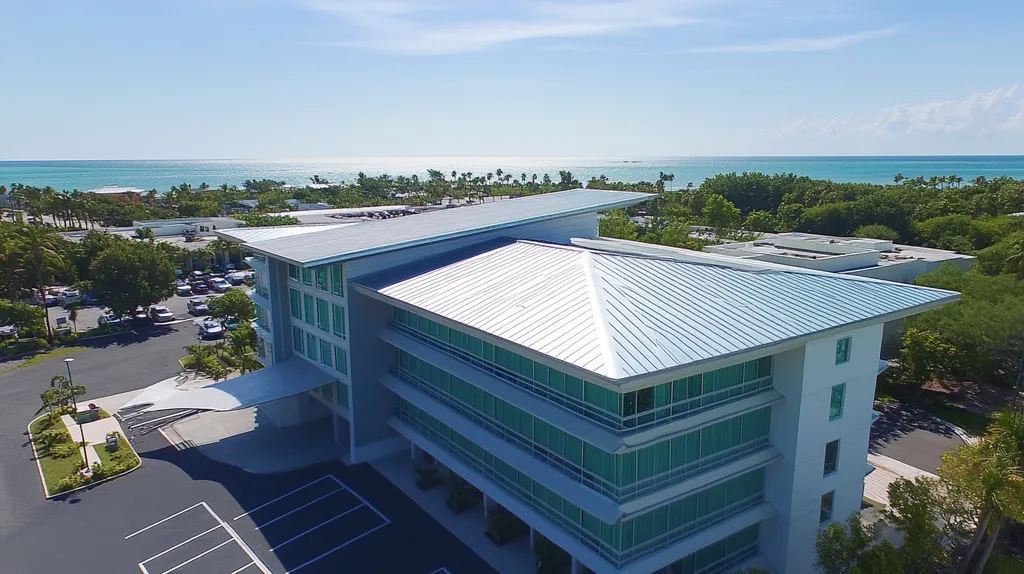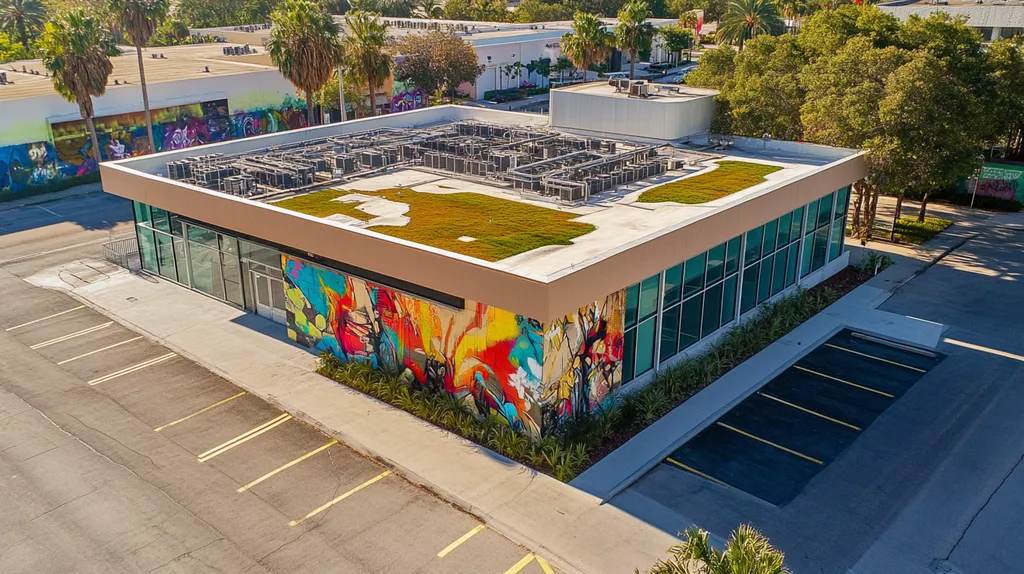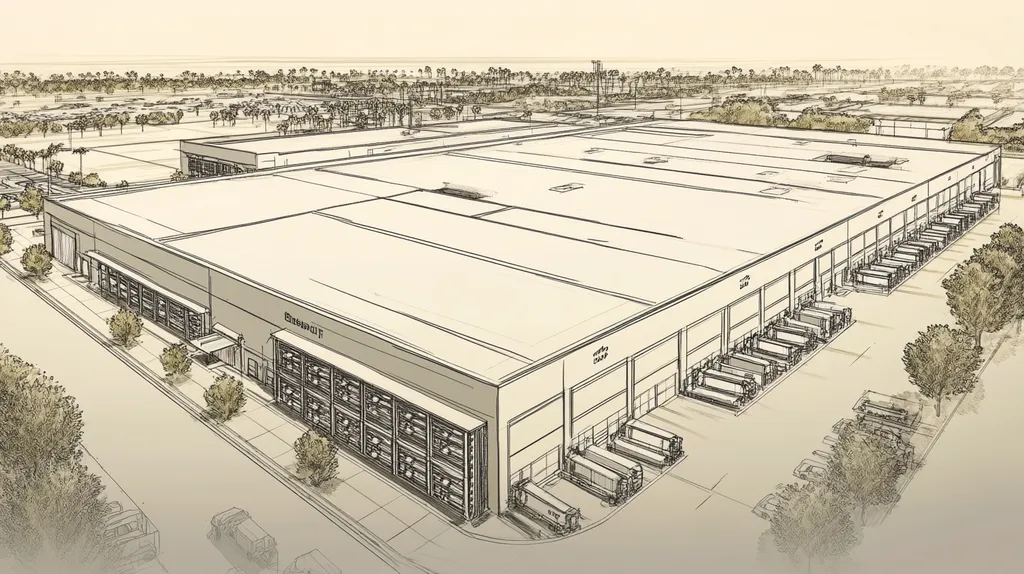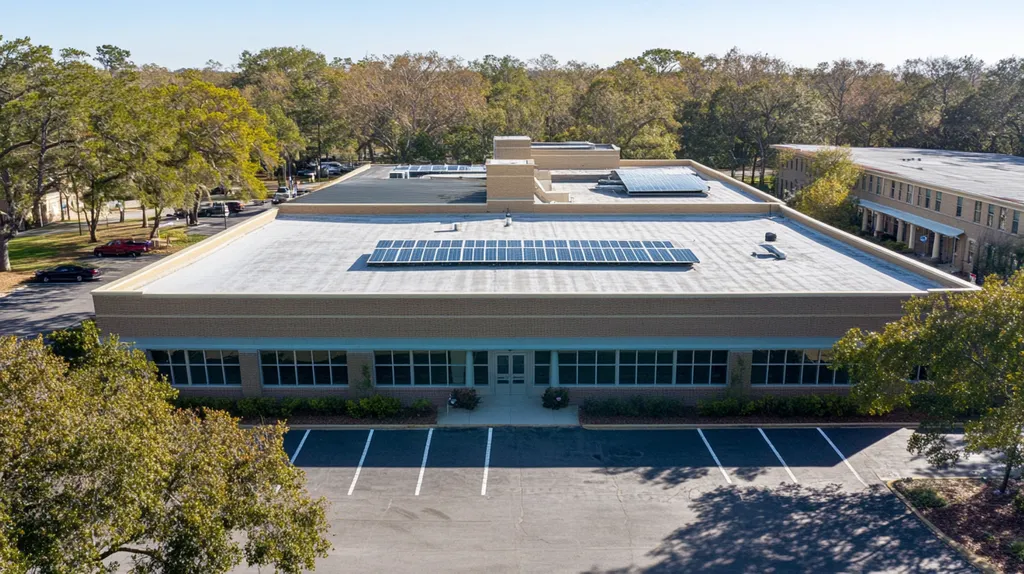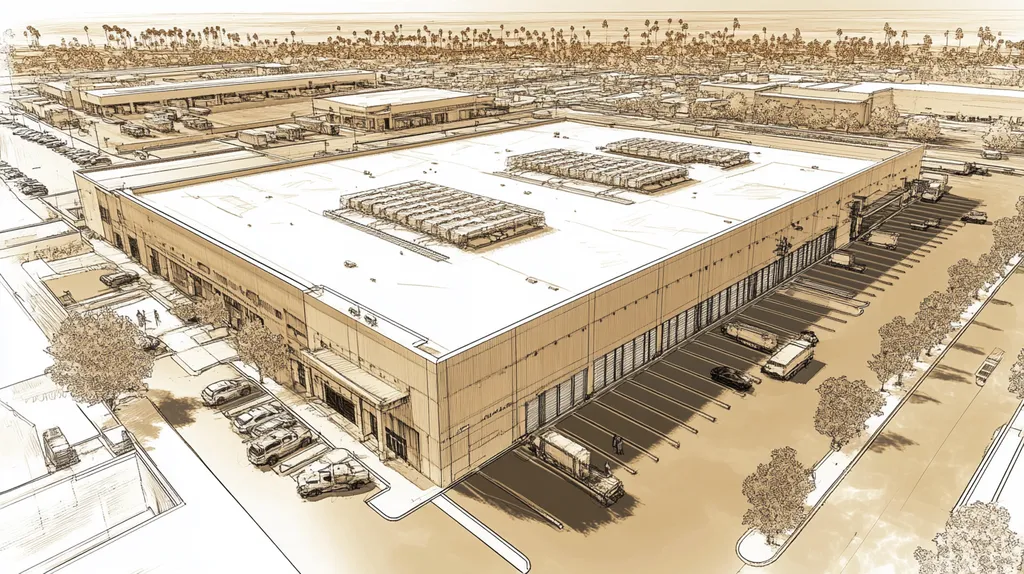In commercial roofing, poor drainage leads to over $3.7 billion in annual repair costs across North America, with parapet-related issues accounting for nearly 40% of these failures.
For facility managers and property owners, understanding how parapets interact with drainage systems isn’t just about preventing leaks—it’s about protecting their entire building investment.
This comprehensive guide examines the critical role of parapets in commercial roof drainage, from fundamental design principles to optimization strategies that can extend roof life by up to 25 years.
SECTION 1: FUNDAMENTAL CONCEPTS
In commercial roofing, effective drainage isn’t just a nice-to-have; it’s a necessity. Neglecting proper drainage can lead to serious problems, including leaks, structural damage, and costly repairs. In fact, nearly 40% of roofing failures can be traced back to inadequate drainage. Therefore, understanding the essential roles of parapets, the principles of water flow, and the importance of roof slope is vital for property owners and facility managers seeking to maintain their buildings and protect their investments.
Role of Parapets in Roof Design
Parapets are the low walls that encircle the edge of a roof, serving both aesthetic and functional purposes. Primarily, they work to shield the roof’s edges from wind uplift and falling debris, but they also play a pivotal role in drainage. A well-designed parapet can effectively reroute water away from the roof edges, reducing the risk of leaks and standing water.
Moreover, parapets are integral to a roof’s drainage system. They help guide water toward designated drainage points, ensuring that excess water doesn’t accumulate and cause stress on the roofing material. The right parapet design actively channels water away, creating a robust defense against overflow.
In advanced designs, parapets can be paired with overflow scuppers or drains, providing multiple pathways for water to exit the roof. This feature is crucial, especially during heavy rainfall, as it ensures that excess water can drain safely and efficiently, easing the burden on the overall roofing system.
Ultimately, the effectiveness of a roofing system in harsh weather heavily relies on how well its parapets are designed. Their role is essential and should always be a key consideration in any comprehensive commercial roofing approach.
Water Flow and Drainage Principles
Having a strong grasp of water flow principles is essential for effective roof drainage. Water naturally moves downhill, searching for the easiest route to points of exit like drains or gutters. This natural tendency is a fundamental consideration in designing roofing systems that manage water efficiently.
Commercial roofs feature several drainage points, specifically designed to accommodate varying levels of rainfall. If drainage is blocked or insufficient, water can pool in low spots, leading to leaks and serious structural problems over time. Properly functioning drainage systems mitigate this risk through strategic placement and sizing of drains.
Additionally, the position of drains concerning parapets affects overall drainage efficiency. If drains are too close to the roof edge, there’s a risk of water backing up and flowing into the building. Ensuring clear pathways for water to reach drains is vital to prevent these hazards.
In summary, a solid understanding of water flow principles informs the design and functionality of effective drainage systems within commercial roofing. This knowledge helps safeguard the structure’s integrity and longevity.
Importance of Slope in Drainage
The slope of a commercial roof is often underestimated, yet it is crucial for effective drainage. Ideally, a roof should have a minimum slope—typically at least ¼ inch per foot—to facilitate the quick movement of water toward drainage points. Insufficient slope can lead to water pooling, which increases the likelihood of leaks, mold, and structural deterioration.
Even the most advanced drainage systems can falter without proper slope. Stagnant water on flat areas can cause extensive damage over time, resulting in costly repairs and a drastically reduced roof lifespan.
Moreover, the right slope enhances the effectiveness of parapets by steering water away from the edges. When a roof is correctly sloped, it creates a streamlined path for water to flow toward drains, preventing accumulation at parapet walls.
By prioritizing slope in roof design, commercial property owners can bolster the resilience of their roofs, reduce ongoing maintenance expenses, and extend the lifespan of their investment.
SECTION 2: SYSTEM COMPONENTS
Effective drainage in commercial roofing is crucial to preventing water accumulation and the damage it can cause. Internal drains, scuppers, and crickets all play essential roles in managing water flow. Understanding their placement and functionality can greatly enhance the longevity and performance of a roof. As such, property owners must prioritize these components during the design and maintenance phases to safeguard their investment.
Internal Drains and Their Placement
Internal drains are pivotal in directing water flow from the roof to the drainage system. Their optimal placement is critical; situating them in low areas of the roof ensures efficient water removal. Larger roofs often require multiple internal drains to handle heavy water volumes effectively.
While planning a drainage system, facility managers should consider the building’s size and structure. Thoughtful placement of drains minimizes the risk of water pooling, ensuring optimal drainage performance. Regular maintenance, including clearing debris from around these drains, is essential for peak functionality.
Furthermore, internal drains should connect to larger piping systems designed to discharge water safely away from the building’s foundation. This precaution helps prevent potential water infiltration and structural damage caused by overflow. Overall, effective internal drainage is a critical element in upholding the building’s integrity.
Scuppers and Perimeter Drainage
Scuppers are openings along a roof’s edge that allow water to flow off directly. Especially in regions prone to heavy rainfall, they enhance drainage efficiency. The strategic placement of scuppers, often in line with parapets, is crucial for directing water away from both the roof and the building.
Perimeter drainage systems, including scuppers, prevent water from pooling along the roof’s edges. This function is vital in safeguarding the building envelope against water intrusion. An improper design of perimeter drainage can result in localized flooding, damaging roofing materials and driving up maintenance costs.
Facility managers should routinely inspect and maintain scuppers, particularly after harsh weather events. Clogged scuppers can create bottlenecks that lead to water accumulating on the roof. Effective drainage at the perimeter significantly influences the overall performance of the roofing system (source: GAF).
Crickets and Drain Sump Pans
Crickets are small, sloped structures placed around internal drains to guide water directly into them. These features are essential to ensuring efficient water flow and preventing pooling on the roof. Without crickets, areas around internal drains may become low spots where debris collects, obstructing water drainage.
Drain sump pans also enhance drainage efficiency by capturing and funneling water toward the internal drain. Their correct installation is necessary to optimize water flow, reducing the likelihood of water accumulating on the roof’s surface.
Both crickets and sump pans require careful consideration during roof design and construction. Overlooking these components can lead to significant repair costs and increased wear on roofing materials. In summary, crickets and drain sump pans are vital components that greatly improve a commercial roof’s drainage capabilities.
SECTION 3: IMPLEMENTATION METHODS
Effective drainage design in commercial roofing is vital for preventing water buildup that can lead to severe structural damage and inflated maintenance costs. Research reveals that inadequate drainage contributes to over 30% of roofing failures. Given the significant role parapets play in directing water flow, it’s crucial to integrate them thoughtfully during installation. This section will detail essential strategies for optimizing roof slope, accurately installing drainage components, and ensuring seamless parapet integration.
Designing Roof Slope for Drainage
Creating an effective slope is the cornerstone of ensuring proper drainage on a commercial roof. A minimum slope of 1% is often advised to help facilitate water movement toward drains or scuppers. Without this proper angle, water can pool and significantly accelerate wear on roofing materials.
It’s essential for designers to account for the roof’s layout and identify any obstacles, such as mechanical units or skylights, that might disrupt water flow. This may require adjustments in either the slope or the positioning of drainage outlets, always prioritizing the roof’s structural integrity.
Regular maintenance of the drainage slope is also crucial. Seasonal inspections can help identify problems like debris buildup that might obstruct water flow. Committing to regular checks ensures that the designed slope remains effective over time.
Lastly, effective communication with roofing contractors during the design phase can lead to smoother installation. Ensuring that everyone involved understands the drainage plan can enhance overall performance and safeguard the roof’s longevity.
Installing Drainage Components
The selection and placement of drainage components are key to effective water management. Common systems, such as internal drains, scuppers, and gutters, each serve distinct functions in directing water away from the roof surface. Proper installation is crucial and should adhere to manufacturer guidelines to maintain warranty compliance.
Internal drains prove particularly effective for large, flat-roofed structures. When positioned correctly, they can effectively prevent water from pooling in hard-to-reach areas. Scuppers, often integrated with parapets, help facilitate efficient water exit while minimizing the risks of overflow.
Ensuring that all drainage components are interconnected is essential for unobstructed water flow. This connectivity is vital, especially during heavy rainfall, as it aids in swift evacuation and mitigates the risk of backflow.
Post-installation inspections are critical to verifying that drainage components remain operational. Accumulated debris can trigger blockages, leading to water backups and potential leaks, underscoring the need for effective ongoing maintenance.
Integrating Parapets with Drainage Systems
For parapets to function optimally, they must be woven into the overall drainage design. When placed strategically, parapets can effectively direct rainwater toward drainage systems, preventing it from overflowing and causing roof erosion.
Incorporating flashing around parapet walls is essential for creating a watertight seal. Properly installed flashing minimizes the risk of leaks at the intersection between the roof and walls, making it crucial to choose durable materials that stand the test of time.
Additionally, the height and design of parapets play a significant role in the drainage plan. Low parapets can exacerbate water overflow during heavy rains, impacting adjacent areas. Ensuring adequate height is crucial for managing water flow effectively.
Collaboration with roofing professionals during parapet design fosters innovative solutions. Elements such as sloped coping or rooftop vegetation can enhance drainage while contributing to aesthetic value. Thoughtful integration of parapets is a critical factor in ensuring effective roof performance.
SECTION 4: MAINTENANCE REQUIREMENTS
Proper maintenance of parapets is essential for effective drainage in commercial roofing systems. Neglecting regular inspections and cleaning can result in severe water damage and expensive repairs. In fact, the National Roofing Contractors Association (NRCA) states that consistent maintenance can prolong the life of roofing systems by up to 20%. This section will outline the crucial tasks of clearing debris from drains, inspecting drain baskets and strainers, and preventing clogs in drain lines.
Clearing Debris from Drains
Regularly clearing debris from drain openings is one of the most critical maintenance tasks for roof systems. Leaves, twigs, and other materials can accumulate, obstructing essential drainage pathways. If these blockages are not addressed, water may pool on the roof, creating conditions ripe for structural damage.
Property owners should conduct inspections after severe storms or high winds, as these events typically result in increased debris accumulation. For larger rooftops, hiring a professional service can save time and ensure thorough cleaning.
Additionally, installing leaf guards or screens can significantly reduce debris buildup, lessening the need for frequent maintenance. Keeping drains clear allows water to flow freely, protecting the roofing system’s integrity.
This routine maintenance not only safeguards the roof but also helps prevent leaks that could damage interior spaces. Regular cleaning schedules can shield property owners from costly repairs down the road.
Inspecting Drain Baskets and Strainers
Regular inspections of drain baskets and strainers are vital for managing water efficiently. These elements serve as the first line of defense against debris entering drain lines. Over time, strainers can wear down or accumulate debris, diminishing their ability to block unwanted materials.
Property managers should inspect strainers at least twice a year to ensure they remain intact and functional. Promptly replacing damaged strainers can prevent water backup that could lead to more significant issues.
Incorporating these inspections into routine maintenance schedules will help identify potential problems before they escalate. A proactive approach saves time and resources, reducing the need for emergency repairs.
Well-functioning drain baskets and strainers enhance the overall drainage system’s performance, protecting the building’s assets and preserving its value.
Preventing Clogs in Drain Lines
Keeping drain lines free of clogs is essential for maintaining effective drainage. Over time, sediment and debris can gather within pipes, creating blockages that impede water flow. These clogs can lead to significant water pooling on the roof, raising the risk of leaks.
Regular inspections utilizing cameras or other technologies can help spot potential problems early. Identifying issues before they worsen allows facility managers to address them promptly, extending the life of the drainage system.
Moreover, routinely flushing drain lines can eliminate residues and prevent buildup. This straightforward yet effective practice ensures that the drainage system remains clear, enhancing the building’s water management capabilities.
By taking proactive steps to prevent clogs, property owners can avoid costly repairs and maintain a safe environment for all building occupants.
SECTION 5: PERFORMANCE METRICS
The effectiveness of drainage systems in commercial roofing directly impacts the longevity and safety of the building. In fact, studies show that poor water management can shorten a roof’s lifespan by as much as 50%. Therefore, facility managers must focus on key performance metrics such as water flow rates, drainage efficiency, and signs of drainage issues. By understanding and tracking these metrics, property owners can avoid costly repairs and ensure the roof remains in top condition.
Monitoring Water Flow Rates
Keeping a close eye on water flow rates is critical for safeguarding roofing systems. Factors such as roof pitch and drainage design can influence how quickly water moves off the roof. By employing flow measurement tools, facility managers can capture valuable data on exit rates during rainfall.
For instance, if a commercial structure has insufficient slope, water may flow more slowly, creating conditions for pooling. Regular checks during rainstorms can help spot such slowdowns early, allowing for corrective measures before the situation worsens.
Recording flow data over time reveals trends that can signal potential blockages within the drainage system. If any drop in flow rates is noted, it should prompt immediate investigation and remediation to maintain roof functionality.
Ultimately, effective monitoring of water flow rates facilitates informed decision-making about drainage strategies, ensuring long-term health for the roof and overall property.
Assessing Drainage Efficiency
Gauging drainage efficiency is essential for verifying that parapets are functioning as intended. An effective assessment measures how efficiently water is channeled away from the roof without pooling.
Conducting evaluations during heavy rain can provide insights into system performance. If water spills over parapets, it may indicate design flaws or blockages that need to be addressed.
Regularly reviewing the drainage design against industry standards helps identify inefficiencies early. Upgrading systems, like adding additional drains, can enhance performance and prolong roof life.
Understanding drainage efficiency not only protects the integrity of the roof but also contributes positively to the property’s overall value.
Identifying Signs of Drainage Issues
Recognizing drainage problems early can save considerable repair costs and preserve the roof’s integrity. Signs to watch for include water pooling, wall stains, and mold growth in areas adjacent to the roof.
Routine inspections, especially post-storm, are vital for identifying issues like debris buildup or misaligned components. Addressing these minor problems promptly can prevent larger complications down the line.
Water that remains on the roof for extended periods can lead to leaks and damage, jeopardizing the entire structure. Facility managers must remain vigilant and document any changes in roof conditions as they arise.
By establishing a regular inspection routine and training staff to spot these indicators, property owners can ensure swift action on drainage issues. This proactive approach not only preserves the roof’s condition but enhances safety and efficiency across the facility.
SECTION 5: PERFORMANCE METRICS
The effectiveness of drainage systems in commercial roofing is vital for extending the lifespan of buildings. Research indicates that inadequate water management can reduce a roof’s life by up to 50%. For facility managers, focusing on key metrics—like water flow rates, drainage efficiency, and early signs of drainage issues—is essential. By keeping an eye on these metrics, property owners can prevent costly repairs and maintain the integrity of their roofing systems.
Monitoring Water Flow Rates
Regular monitoring of water flow rates is crucial for maintaining roofing system integrity. Factors such as roof pitch and drainage design directly influence how quickly water exits the roof. By utilizing tools to measure flow rates, facility managers can gather useful data on water movement during rain events.
For instance, if a commercial building has insufficient slope, water may flow sluggishly, leading to dangerous accumulation. Regularly checking flow rates during rainfall can help identify these slowdowns early, allowing for quick corrective measures to mitigate risks.
Moreover, recording flow data over time enables property managers to notice trends and detect potential blockages in the system. If there’s an unexpected drop in flow rates, it should trigger a quick investigation to address the issue.
In summary, meticulous monitoring offers a solid foundation for informed decision-making about drainage strategies, ensuring the long-term health and reliability of roofing systems.
Assessing Drainage Efficiency
For parapets to function effectively, it’s crucial to understand drainage efficiency. This can be assessed by evaluating how swiftly water is channeled away from the roof to prevent ponding. A hands-on approach involves assessing performance during heavy rain, allowing property owners to see firsthand how well water flows away from parapets.
When conducting this assessment, if water spills over a parapet, it may indicate design flaws or clogs that need immediate attention. Regular reviews of drainage systems against industry standards can help spot inefficiencies early, guiding necessary upgrades, such as adding drains or revising slopes.
Enhancing drainage efficiency significantly affects the lifespan of roofs and the overall value of the property. With thorough assessments, facility managers can make timely, data-driven improvements that contribute to better roof management and sustainability.
Identifying Signs of Drainage Issues
Recognizing early signs of drainage problems is essential for protecting roofing investments and preventing major damage. Common indicators include water pooling on roofs, visible stains on walls, and mold growth in surrounding areas.
Property owners should prioritize routine visual inspections, especially after heavy rainfall or storm events. By observing for signs like debris buildup or misaligned drainage components, they can act quickly to address minor issues before they escalate.
Stagnant water on roofs can lead to leaks and structural damage, posing a risk to the entire building. Facility managers must remain vigilant and document any changes in roof conditions for effective tracking.
By implementing a regular inspection schedule and training staff to recognize these signs, property owners can ensure rapid response to drainage problems. This proactive strategy not only protects the roof’s integrity but also enhances safety and efficiency throughout the facility.
The Bottom Line
With over $3.7 billion spent annually on water damage repairs in commercial buildings, proper parapet and drainage design isn’t just about maintenance—it’s about protecting substantial investments.
The integration of well-designed parapets with efficient drainage systems can extend a roof’s lifespan by up to 25 years while significantly reducing repair costs.
Regular monitoring of drainage performance metrics, combined with proactive maintenance schedules, remains crucial for preventing costly failures.
As climate patterns continue to intensify, implementing robust parapet-integrated drainage solutions becomes increasingly critical for facility managers and property owners seeking to safeguard their buildings against water damage.
The future of commercial roofing lies in understanding and optimizing these essential drainage components, ensuring buildings remain protected for decades to come.
FREQUENTLY ASKED QUESTIONS
Q. Why is drainage important for commercial roofs?
A. Effective drainage prevents water accumulation that could lead to structural damage or leaks. Neglecting it can cost property owners significantly in repairs, shortening the lifespan of the roof. Approximately 40% of roofing failures are due to improper drainage.
Q. How do internal drains function in commercial roofing?
A. Internal drains channel water from the roof to a drainage system, preventing pooling. They should be placed in low areas for maximum efficiency and connected to larger pipe systems that safely move water away from the building.
Q. What role do scuppers play in drainage?
A. Scuppers are openings that allow water to flow off the roof, enhancing drainage performance. Positioned along the roof edge, they prevent water from accumulating at the perimeter, which can shield the building from water damage.
Q. How can I maintain my roof’s drainage system?
A. Regularly clear debris from drains, inspect strainers, and prevent clogs in drain lines. Schedule inspections after severe weather to catch issues early, ensuring that your roof’s drainage system functions optimally to avoid costly repairs.
Q. How can I assess drainage efficiency?
A. Observe how quickly water is moved off the roof, particularly during heavy rainfall. If water overflows or pools, this may indicate drainage issues or blockages that need urgent attention to maintain efficiency.
Q. What are common signs of drainage problems?
A. Look for water pooling on the roof, stains on walls, or mold growth. These indicators suggest that drainage issues are present and should be addressed quickly to prevent further damage.
Q. How should I choose a roofing contractor for my commercial roof?
A. Look for contractors with extensive experience in commercial roofing and strong references. They should be knowledgeable about drainage systems and willing to collaborate closely throughout the design and installation process, ensuring optimal performance for your roof.

